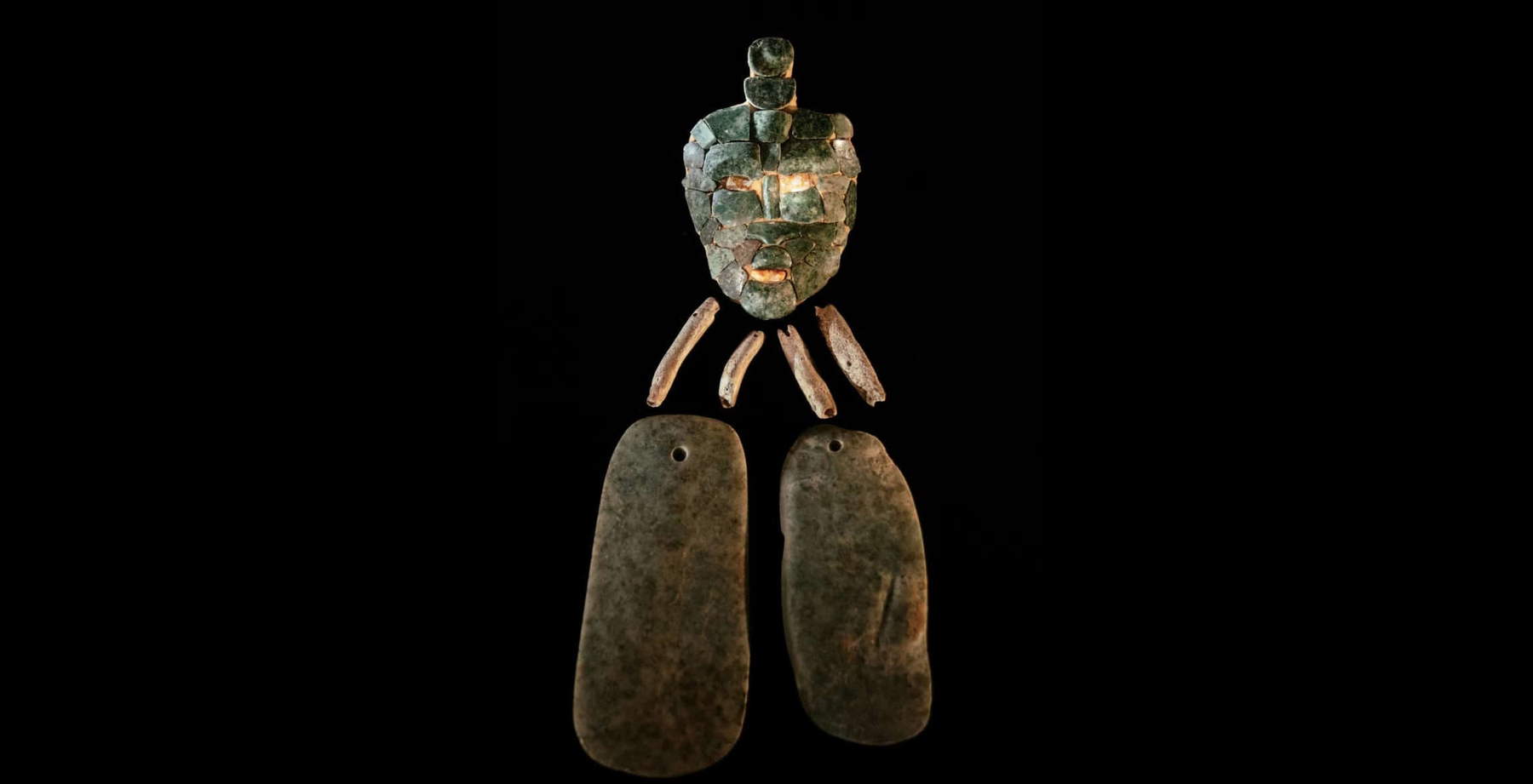Interesting archaeological discovery in northeastern Guatemala, where a splendid jade mask has been found at the Mayan site of Chochkitam, laid on the chest of a king buried at this very site, and dating back to 350 A.D., thus to the “classical” period of the Maya. Breaking the news of the discovery, which occurred as part of the Holmul Archaeological Project, from the American University of Tulane, is National Geographic magazine. Leading the researchers was archaeologist Francisco Estrada-Belli, a professor at Tulane University’s Middle American Research Institute, who in 2021 noticed that some grave robbers had dug a tunnel inside an ancient Maya pyramid, and noticed, along with colleague Bhanny Giron, a spot that had been missed by looters. The search focused on that spot. As Giron dug, he found a skull, some teeth, and what appeared to be a sarcophagus, along with the offerings that had accompanied the burial: a vase, a collection of oyster shells, pieces of bone, and a few pieces of carefully arranged, polished jade. Back in the lab in late June 2022, Estrada-Belli studied the jade pieces more closely: at other Maya sites, blocks like the one found at Chochkitam had been used to form mosaic masks for royal burials, often arranged to represent deities or ancestors and commonly associated with the wealth and power of the people with whom they were buried. Estrada-Belli noticed that jade found at the site also gave the shape of a mask. In addition, a colleague noticed that some of the bones that archaeologists thought belonged to the person buried in the tomb were actually covered with fine carvings, probably made using volcanic obsidian glass: in fact, it was discovered from analysis that two of the bones were not those of the buried king, but their carvings revealed the identity of the ruler who had been given burial at the site. Moreover, one of the engravings depicted a ruler holding the head of a Mayan deity, the same god represented in the mask that Estrada-Belli had put together, a circumstance described as “extraordinary” in National Geographic.
Subsequently, archaeologist Alexandre Tokovinine of the University of Alabama, who specializes in Maya epigraphy, helped Estrada-Belli decode the engravings, unlocking the secrets of the identities of both the ruler, named Itzam Kokaj Bahlam, and the god. This would be, in particular, the deity known as Chahk, a manifestation of the Maya storm god, a kind of rain god.
The discovery is “very, very unusual,” Estrada-Belli tells National Geographuc. Indeed, although his burial site clearly shows a Mayan ruler with his prerogatives, references in the artwork and buildings discovered at the site lend credence to a growing theory that many local leaders of the time were subordinate to, if not outright maneuvered by, other, more powerful rulers. Some of the objects found there echo those found in other powerful Mesoamerican cities, including a depiction of Itzam Kokaj Bahlam in a frontal position.
“Everything suggests to me that this was a Mayan king who was part of a network of Mayan rulers in the sphere of influence of Tikal and Teotihuacá,” Estrada-Belli says. The ancient Mesoamerican city of Teotihuacán, located in present-day Mexico, and the Mayan city of Tikal, located in the department of Petén in Guatemala, were both larger and more influential than the relative backwater of Chochkitam. “There is no declaration of vassalage at the site,” says Estrada-Belli. “But if you read between the lines, here’s what it means: these were vassals, probably of Tikal directly and of Teotihuacán indirectly.” In short, a discovery that could let us know more about how Maya society was organized. And obviously an exciting discovery for its authors. “We can look at the bones of this individual,” says Estrada-Belli, “but we can also see him dressed in his insignia,” and in full possession of his royal power. “It’s an extraordinary emotion and a privilege. Sometimes we are lucky.”
Pictured is the mask discovered in Guatemala. Photo: University of Alabama
 |
| Guatemala, jade mask discovered in tomb of ancient Mayan king |
Warning: the translation into English of the original Italian article was created using automatic tools. We undertake to review all articles, but we do not guarantee the total absence of inaccuracies in the translation due to the program. You can find the original by clicking on the ITA button. If you find any mistake,please contact us.